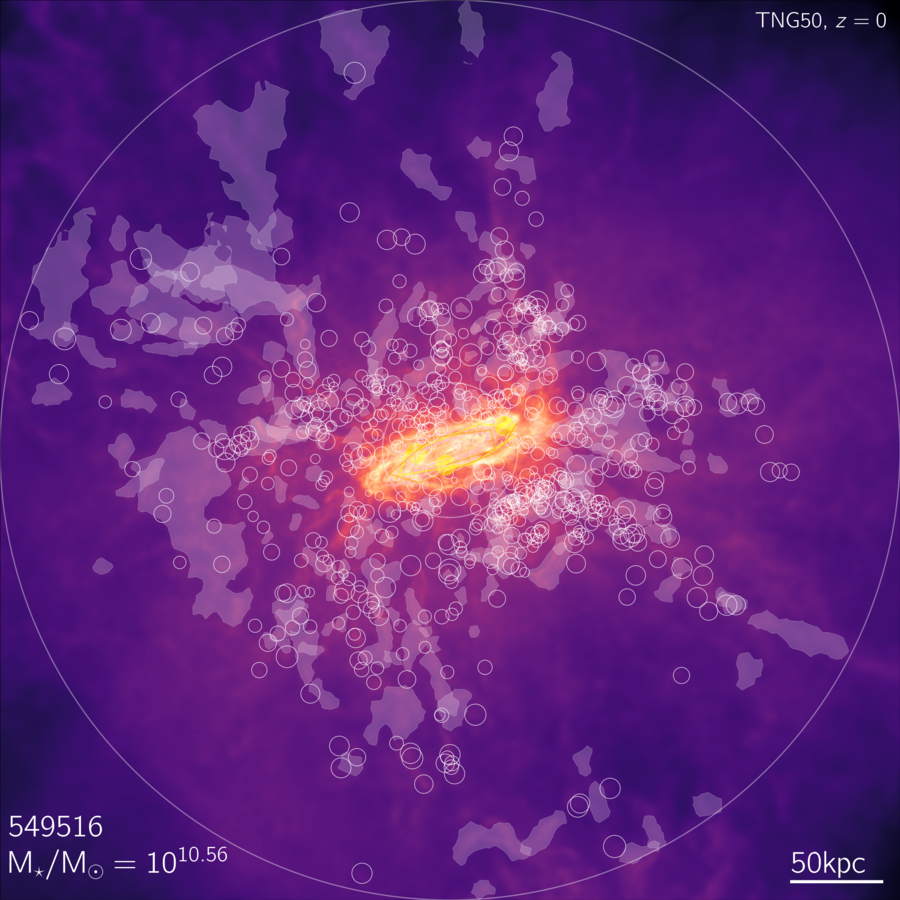
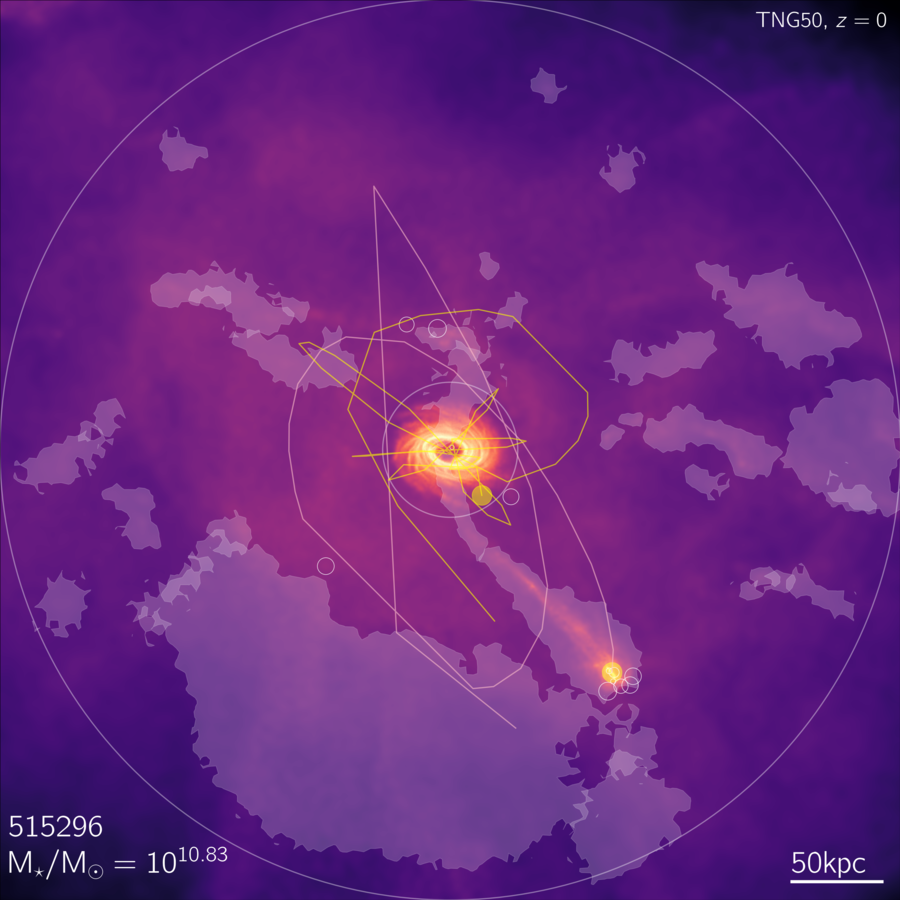
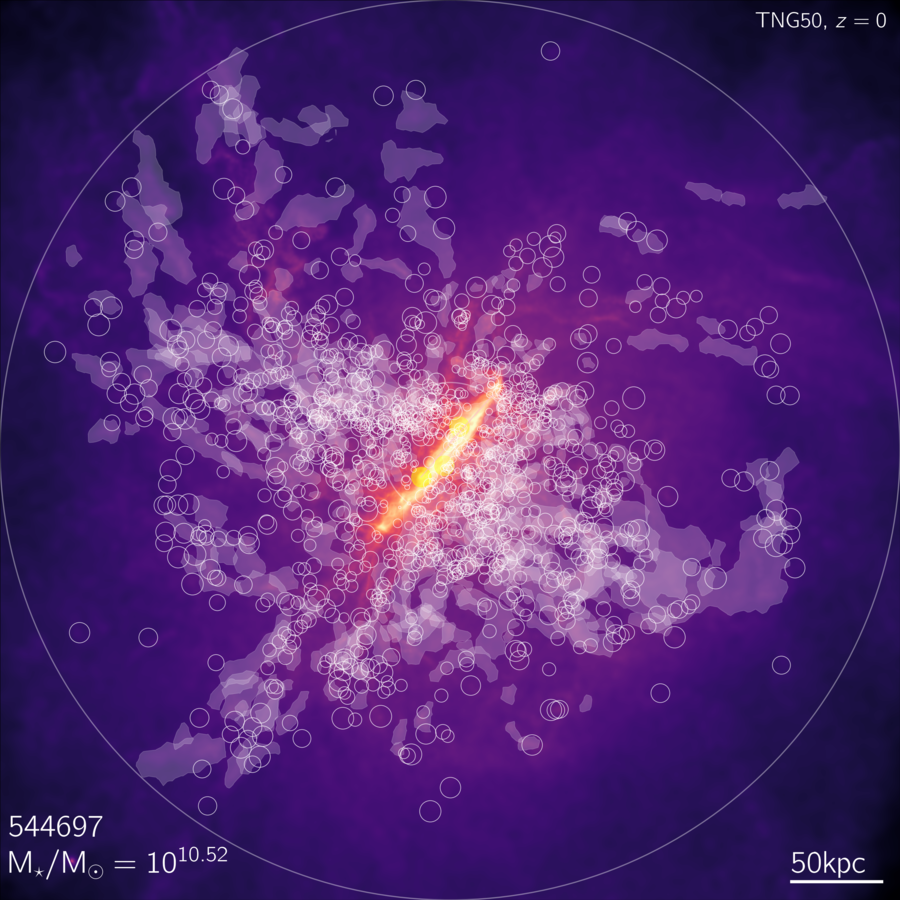
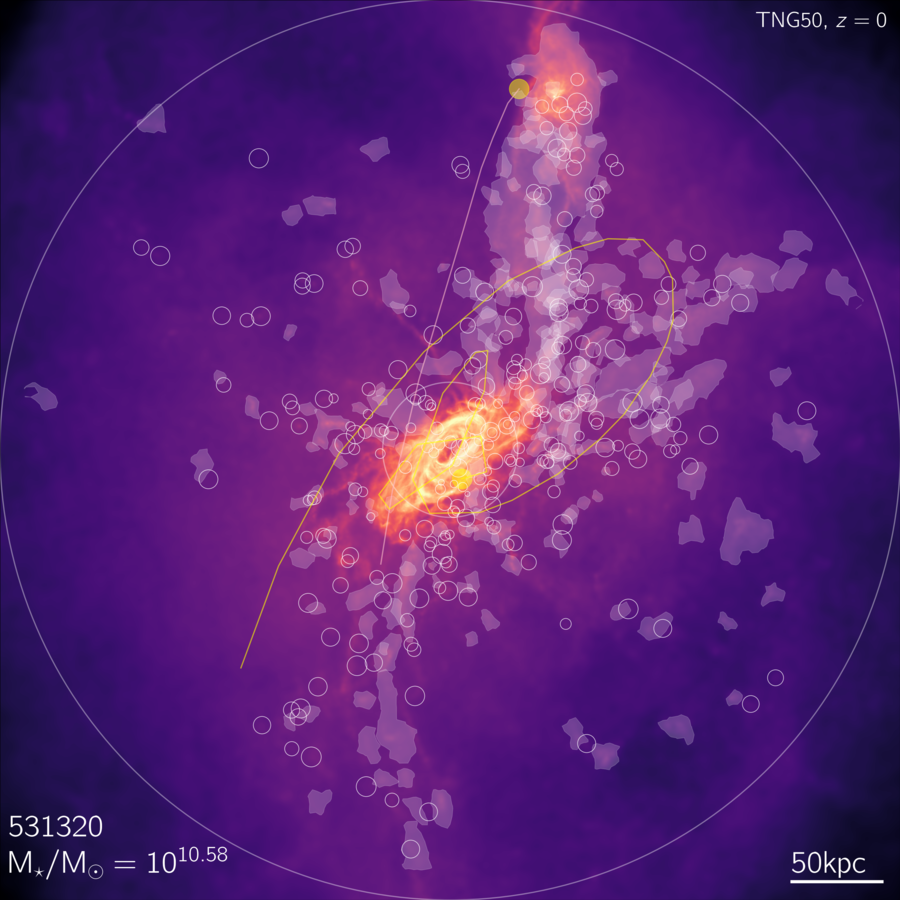
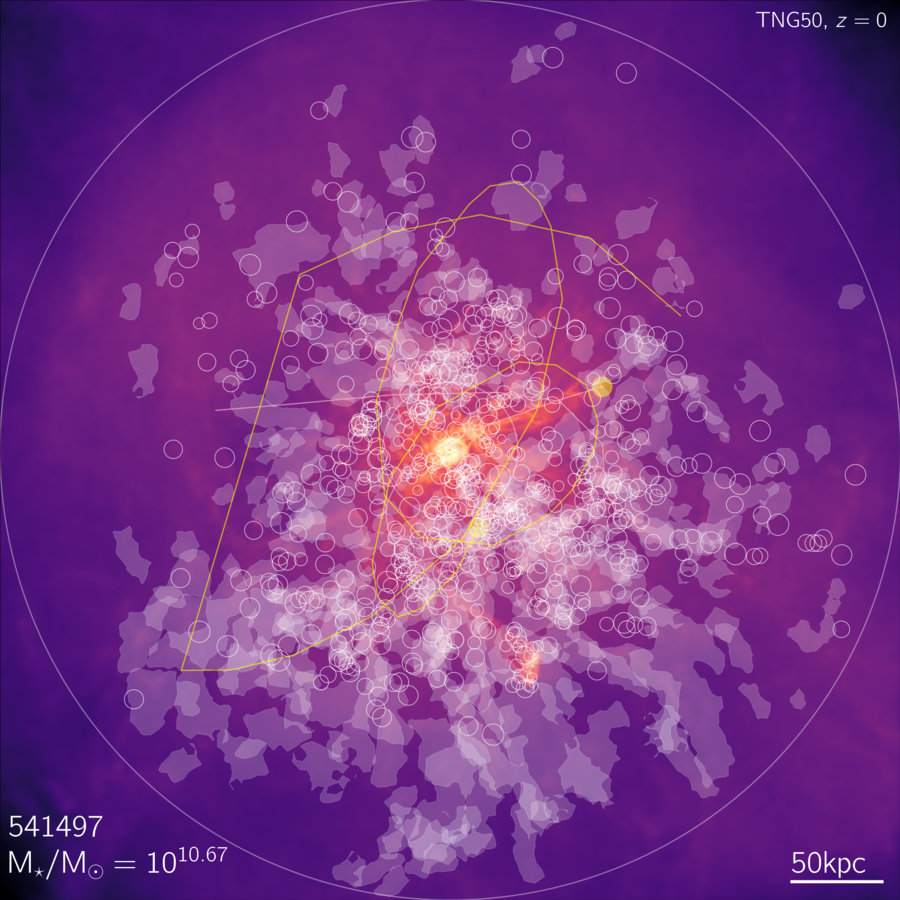
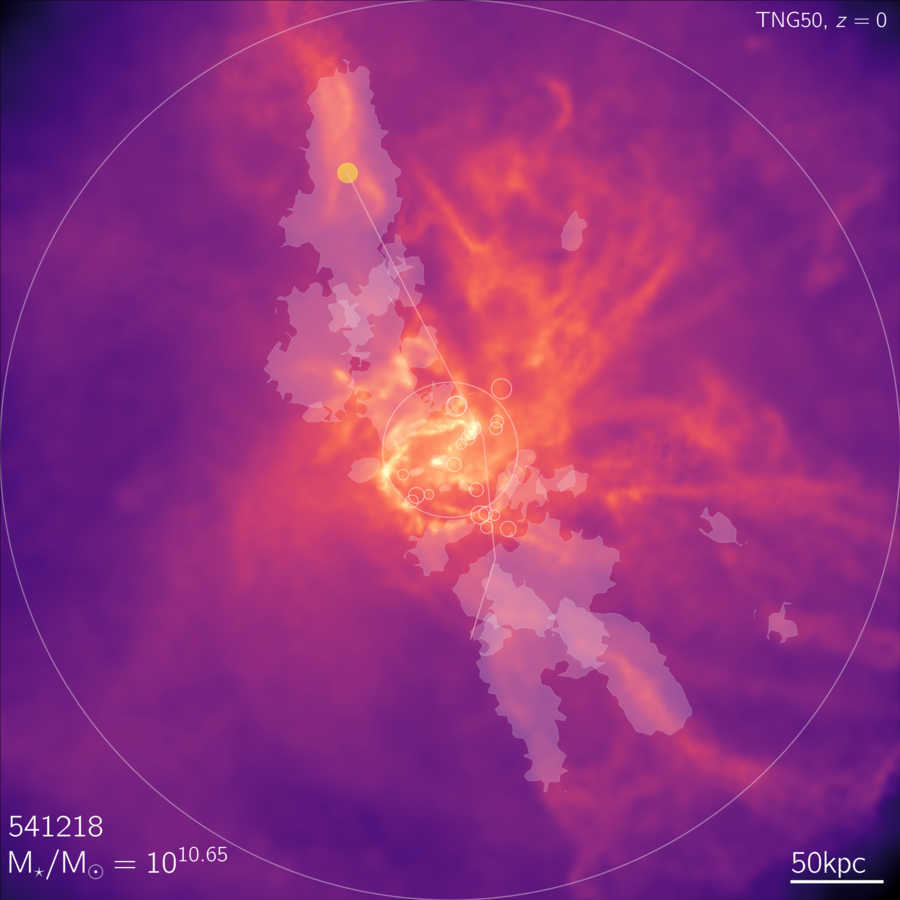
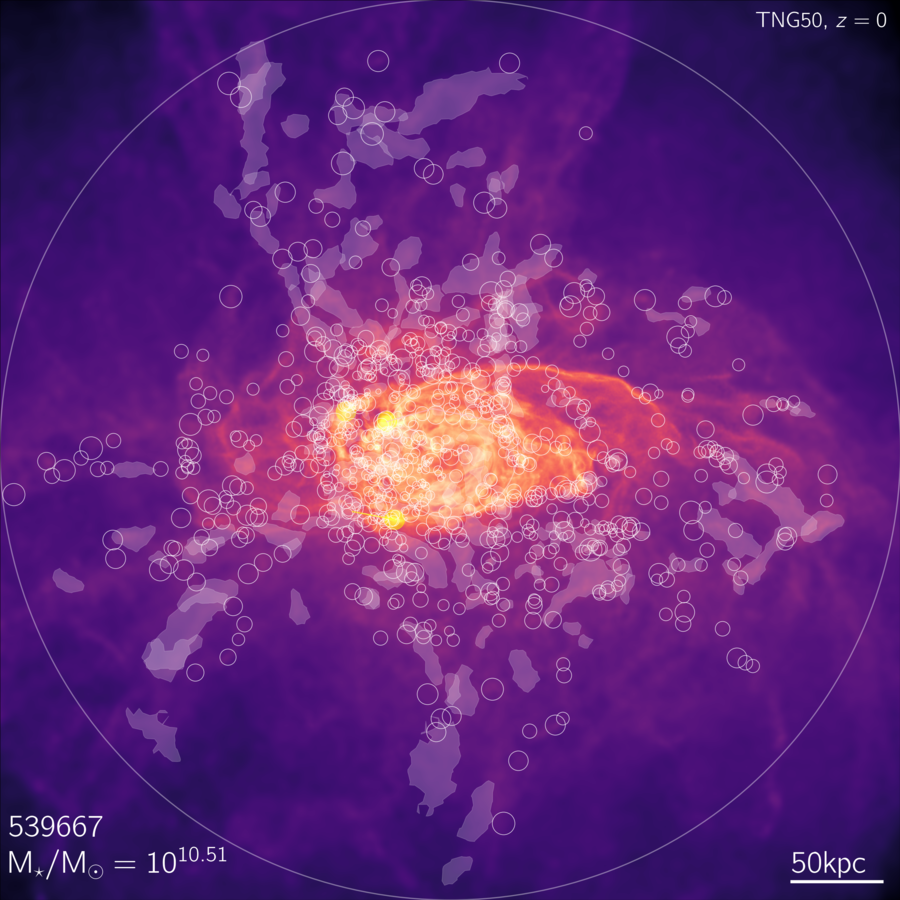
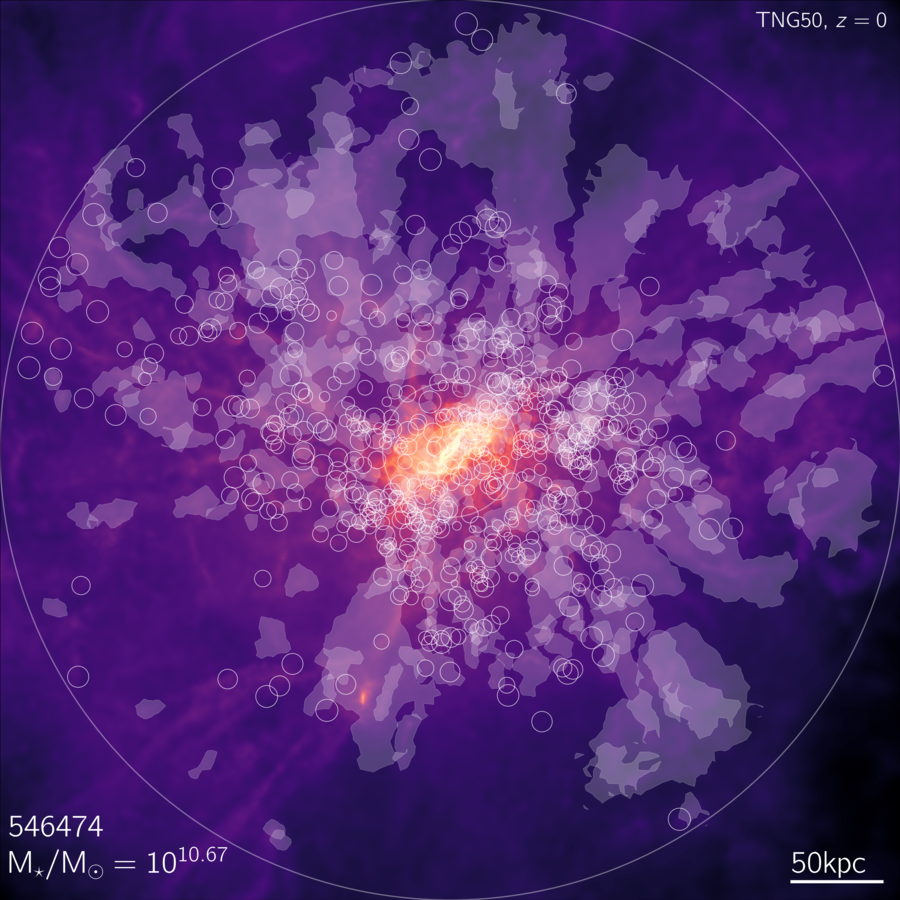
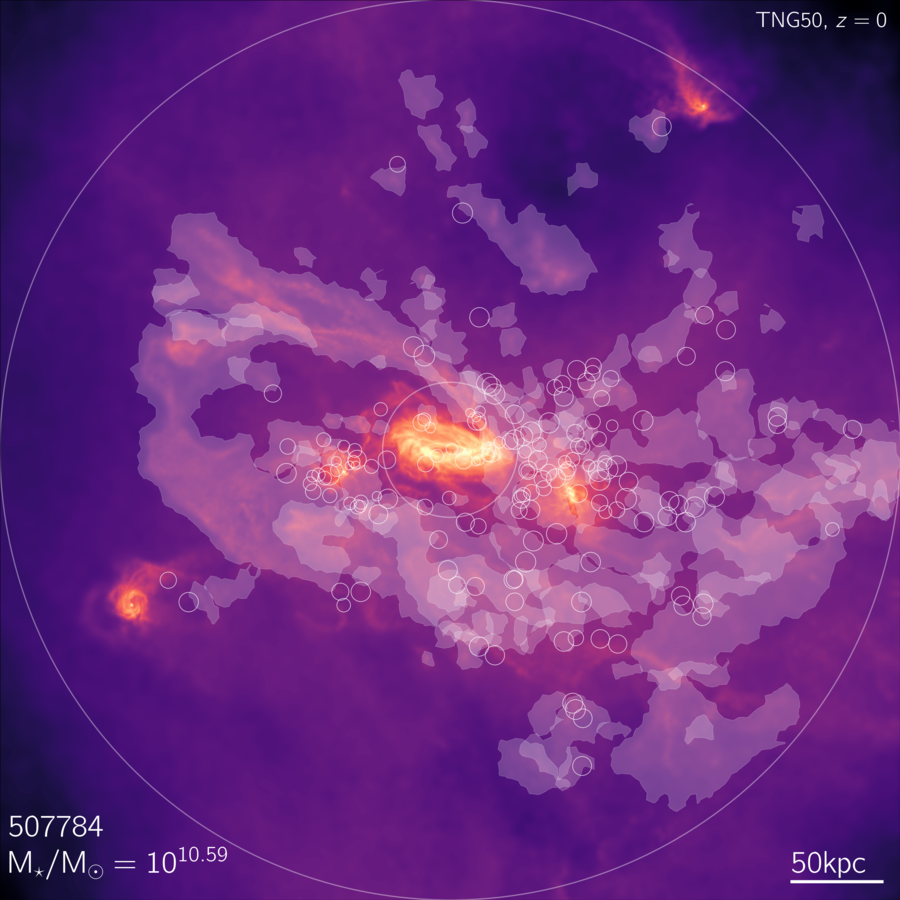
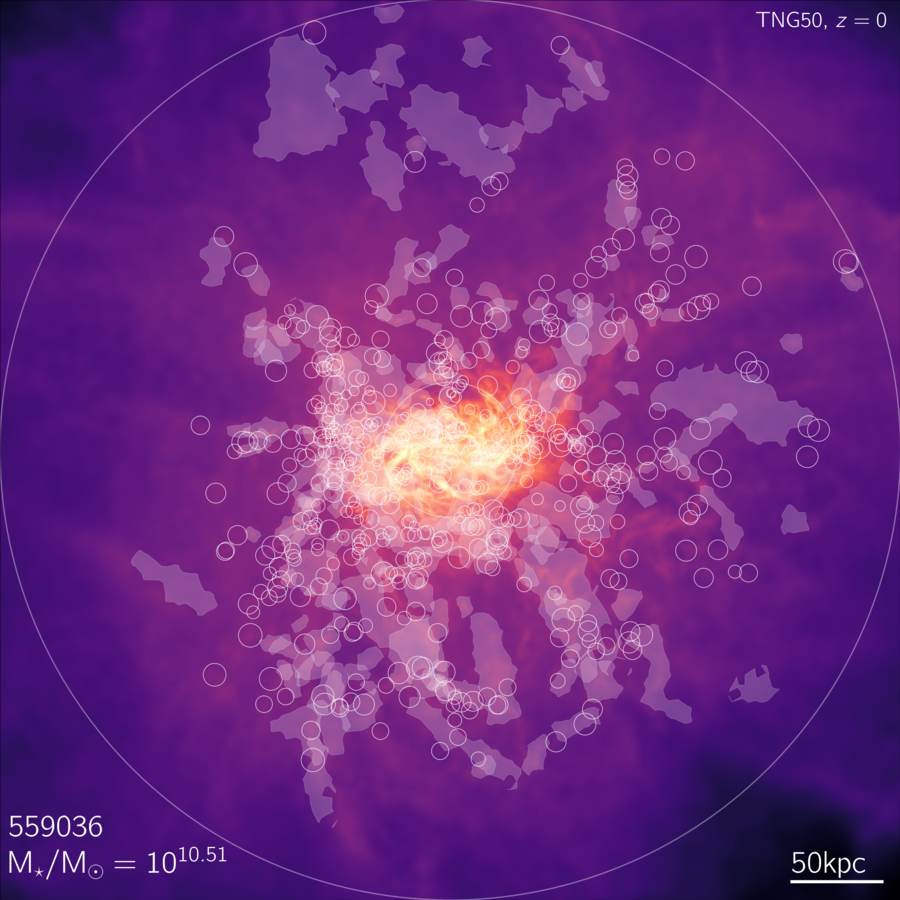
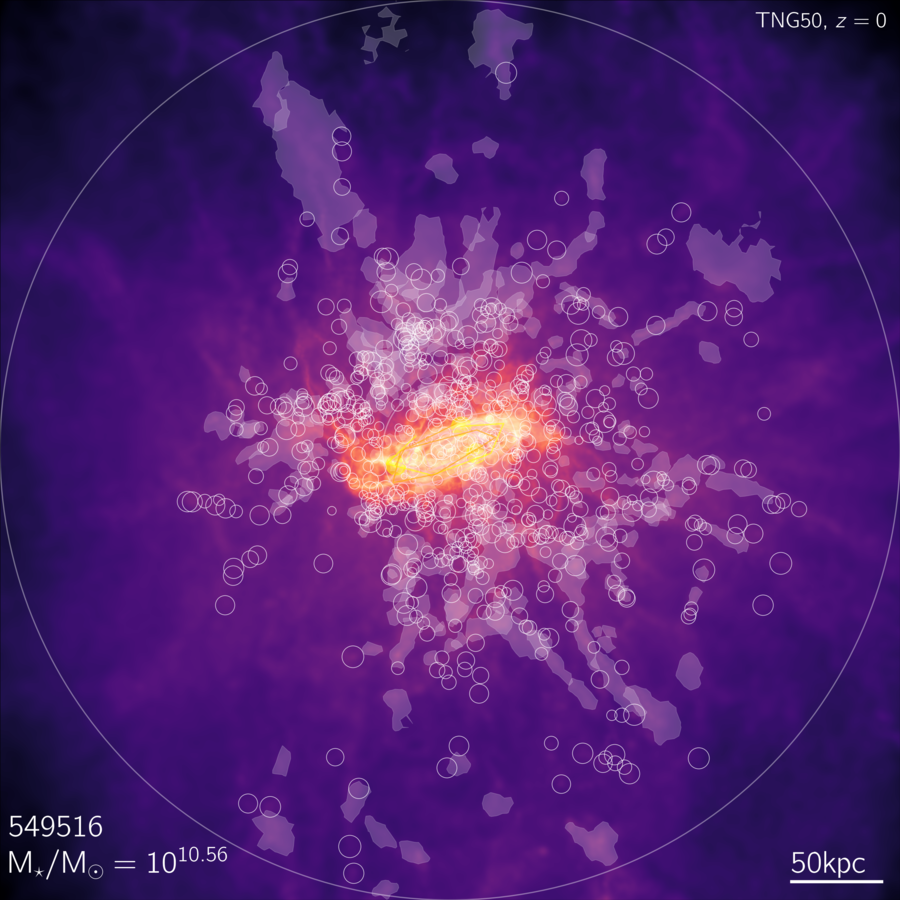
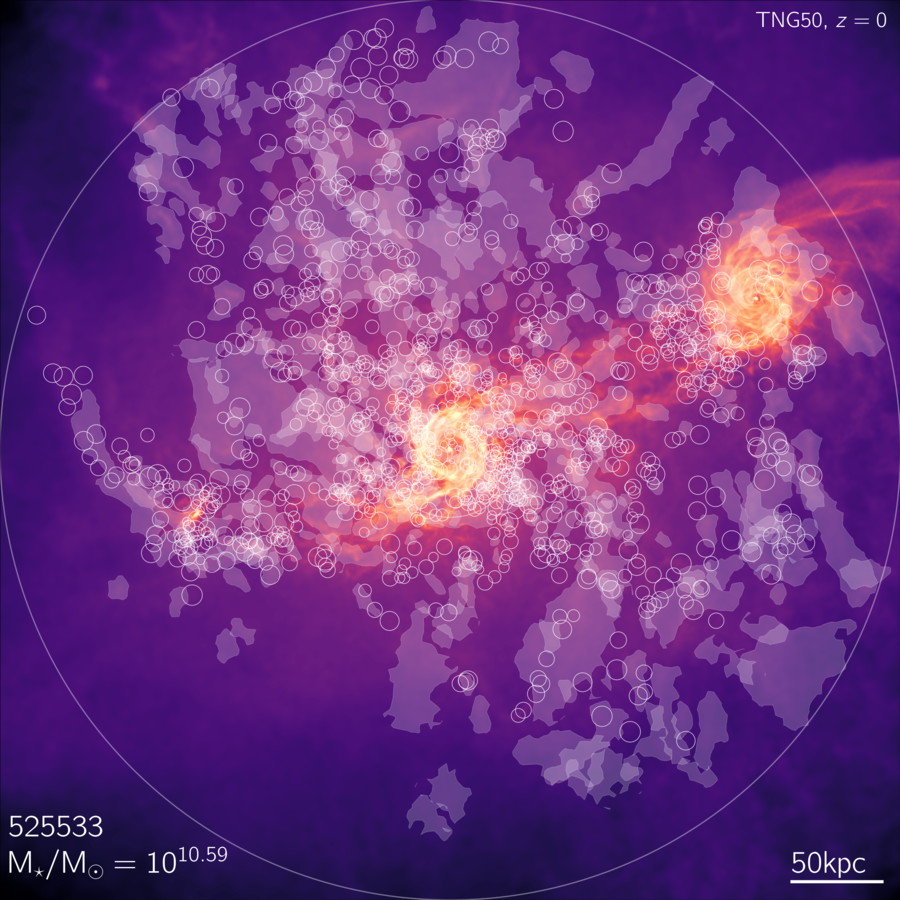
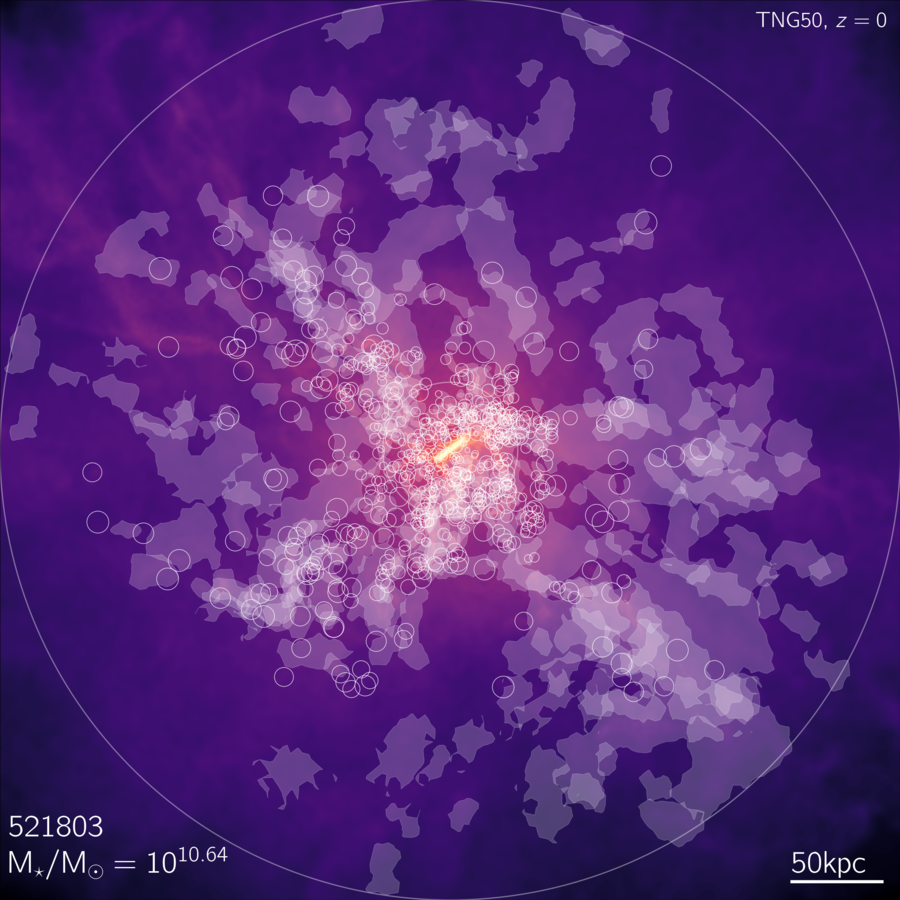
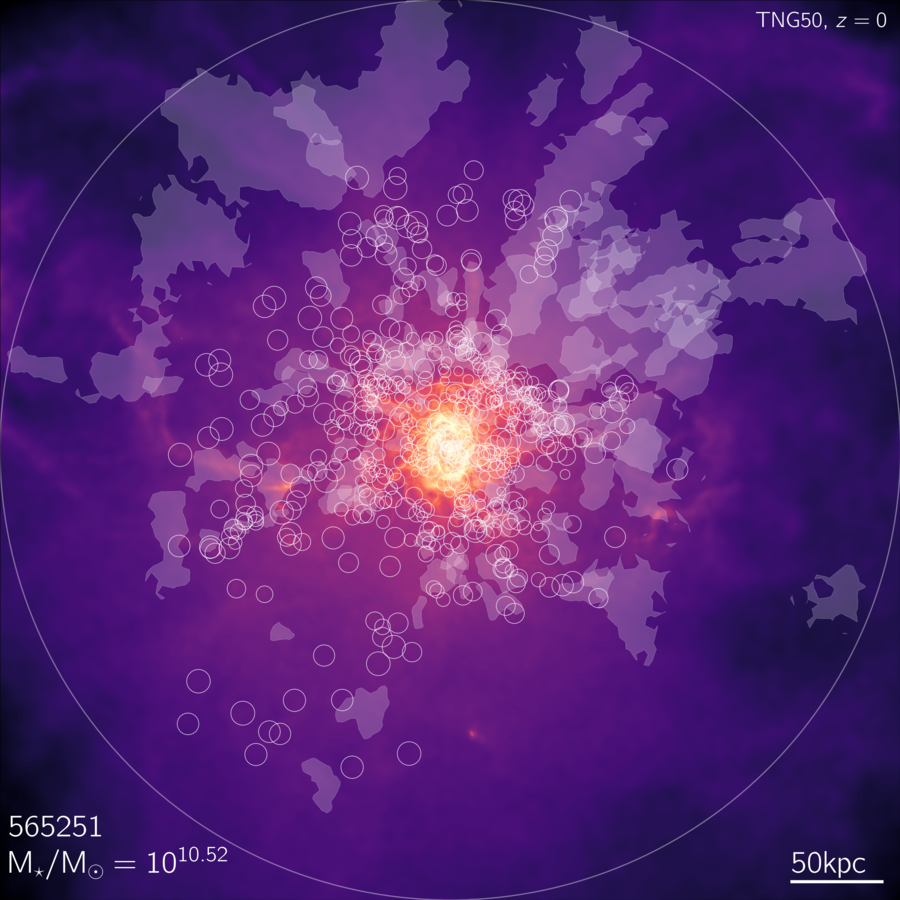
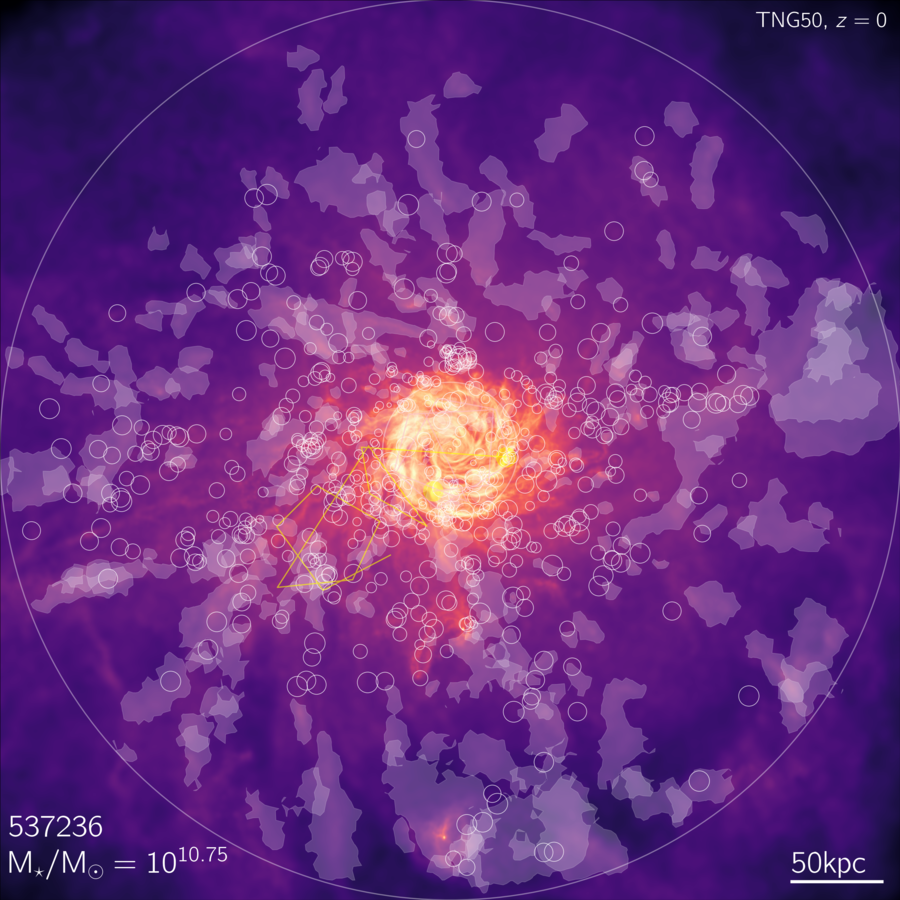
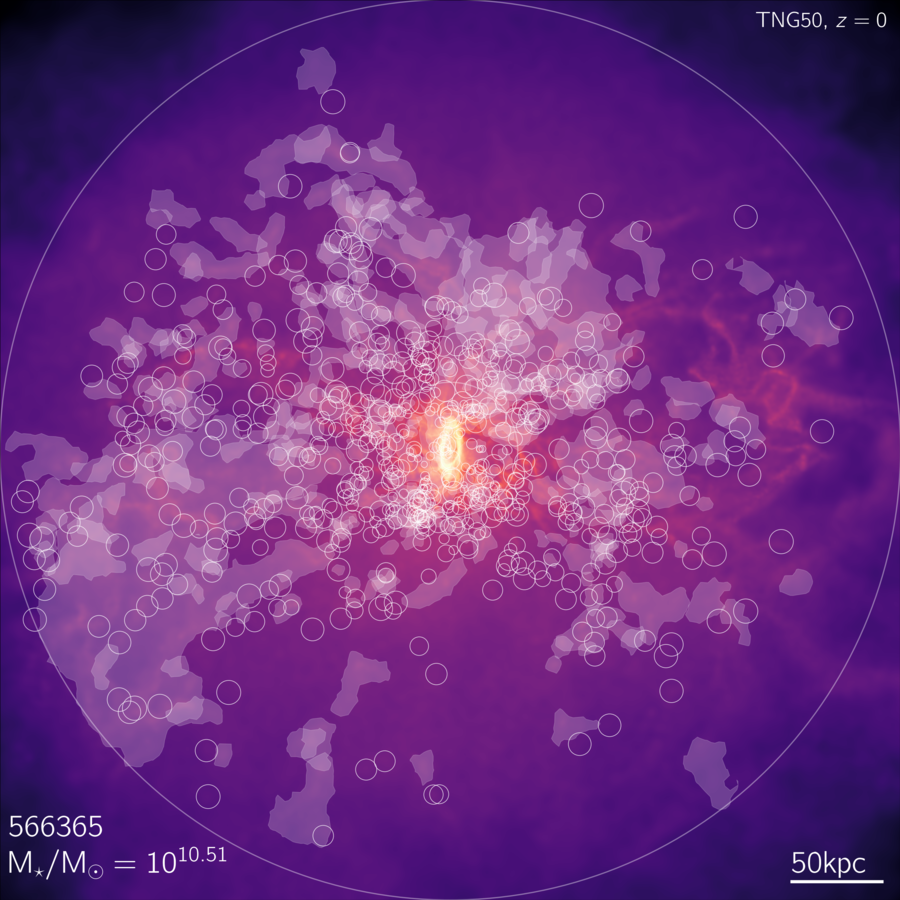
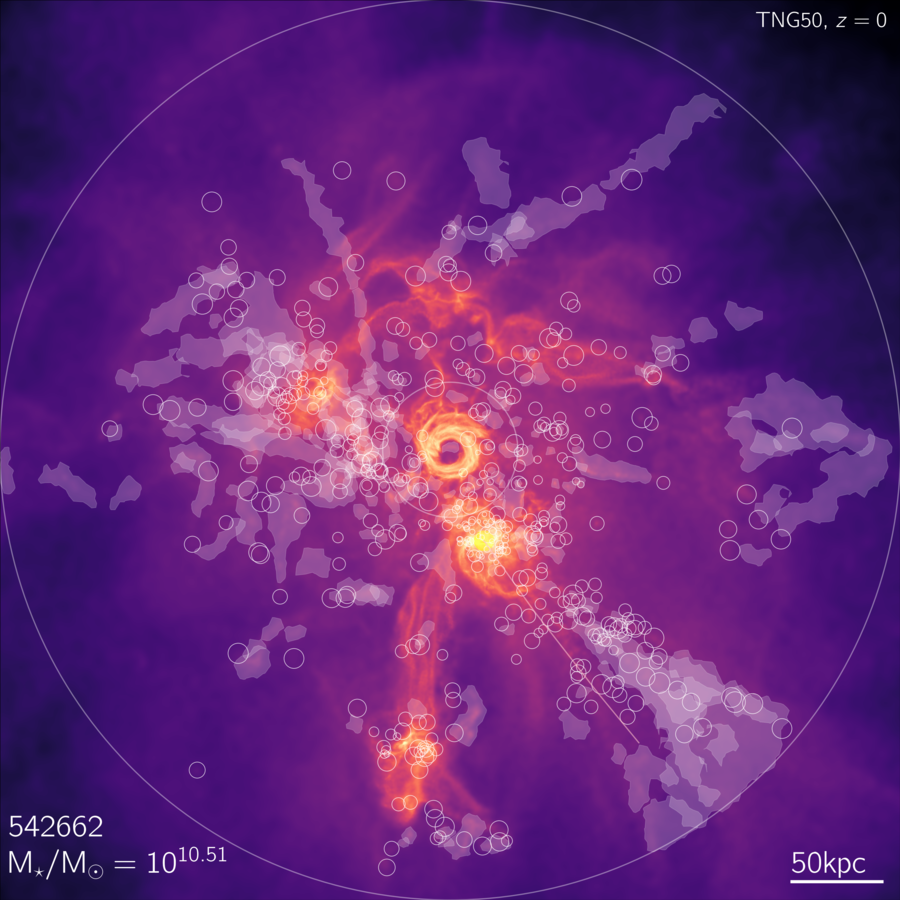
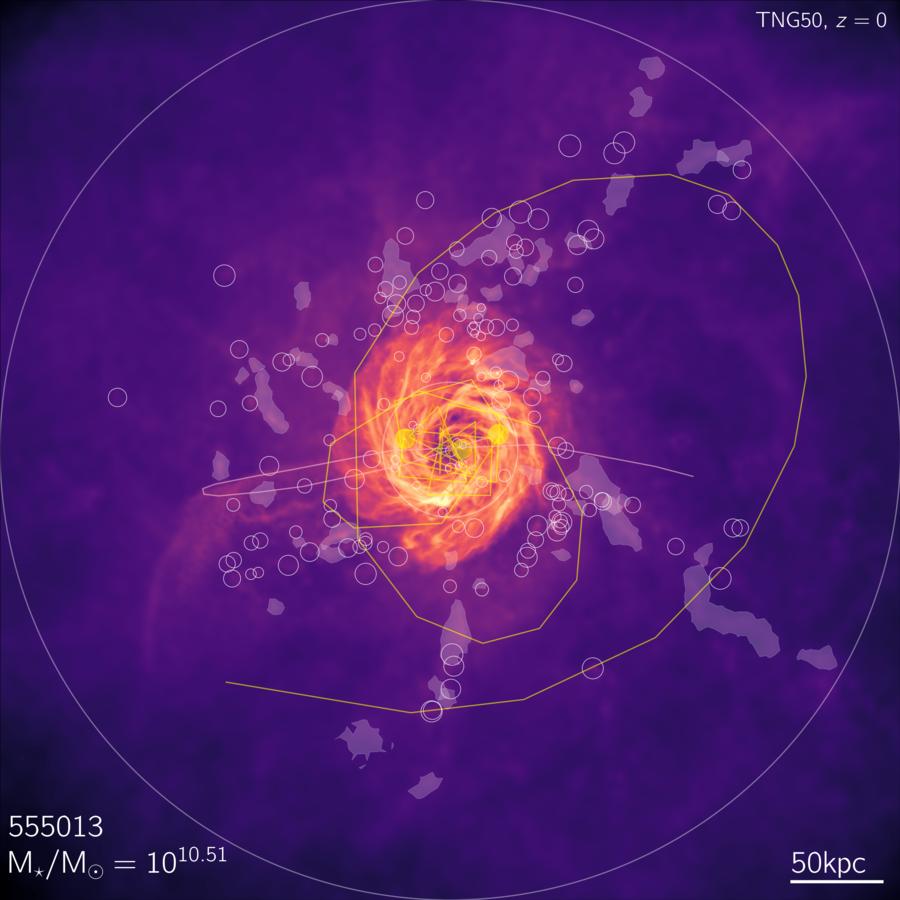
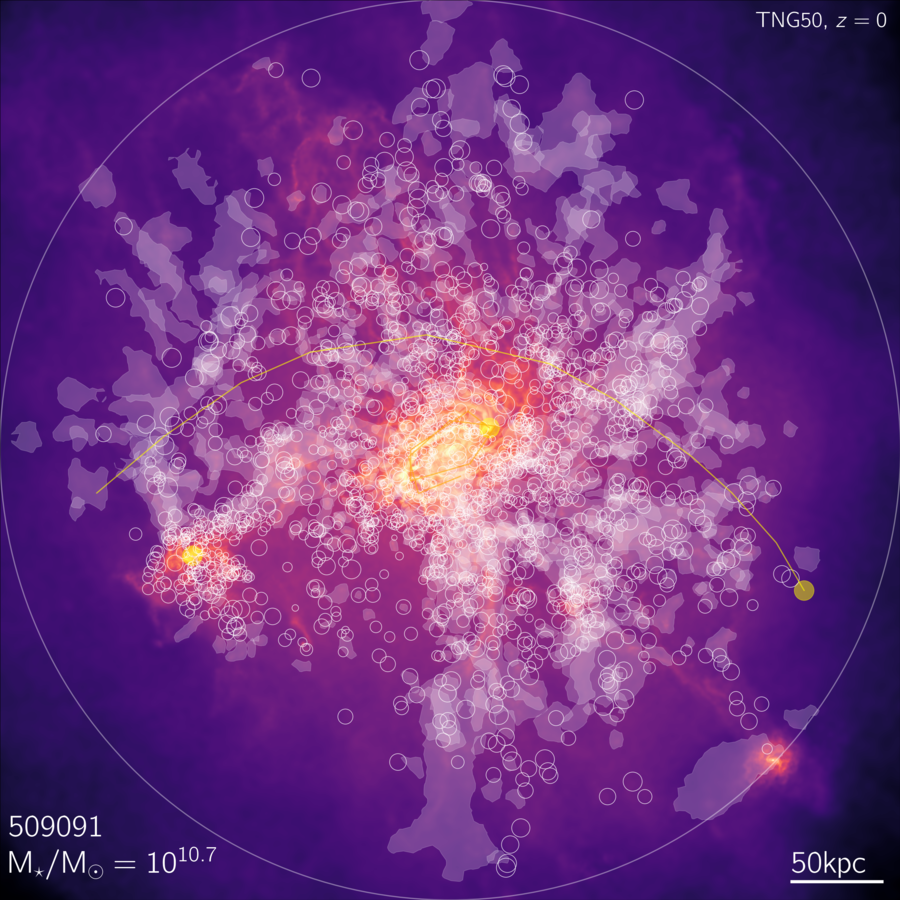
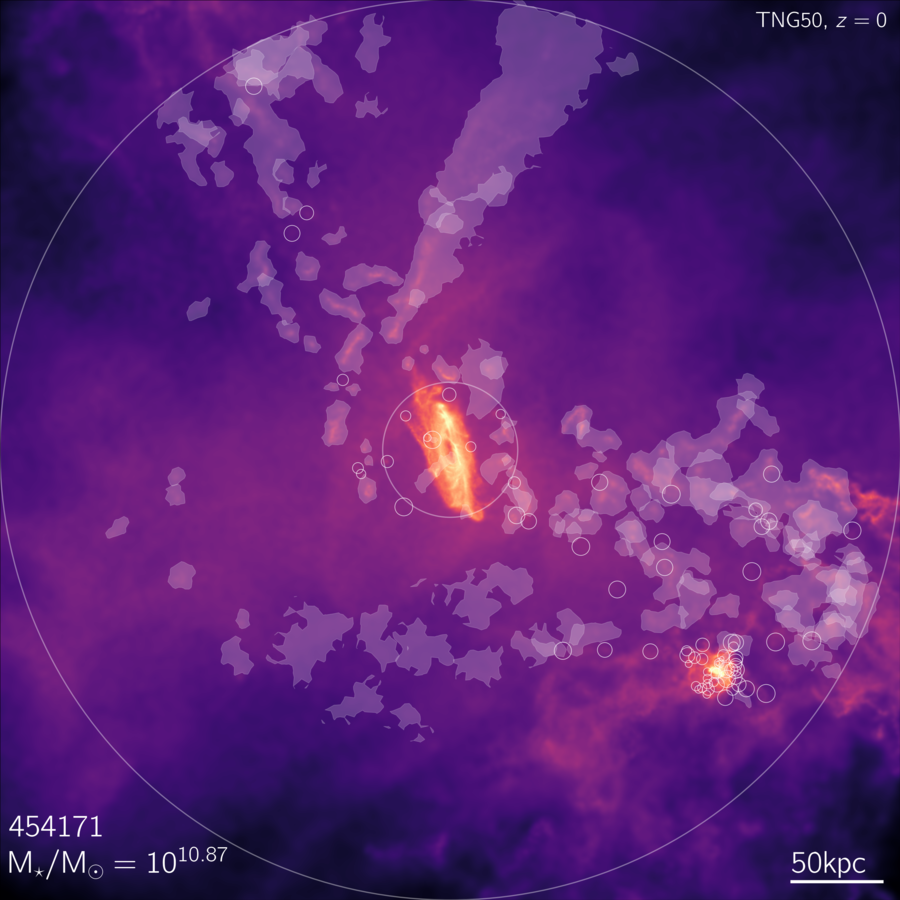
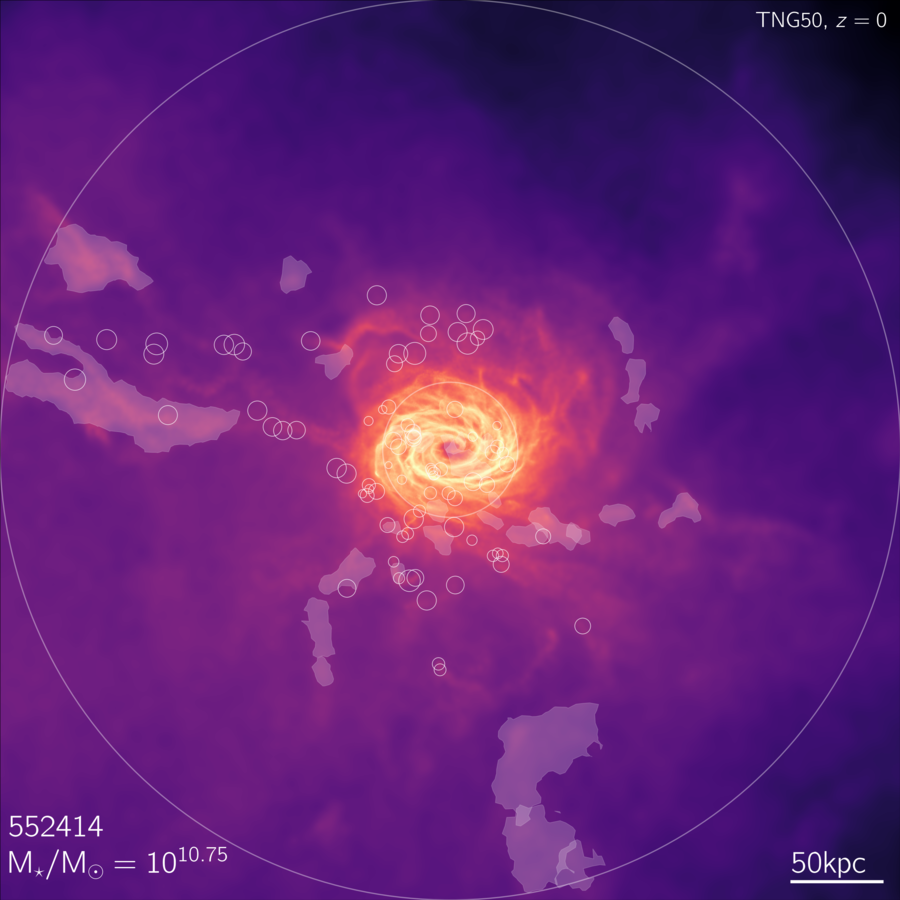
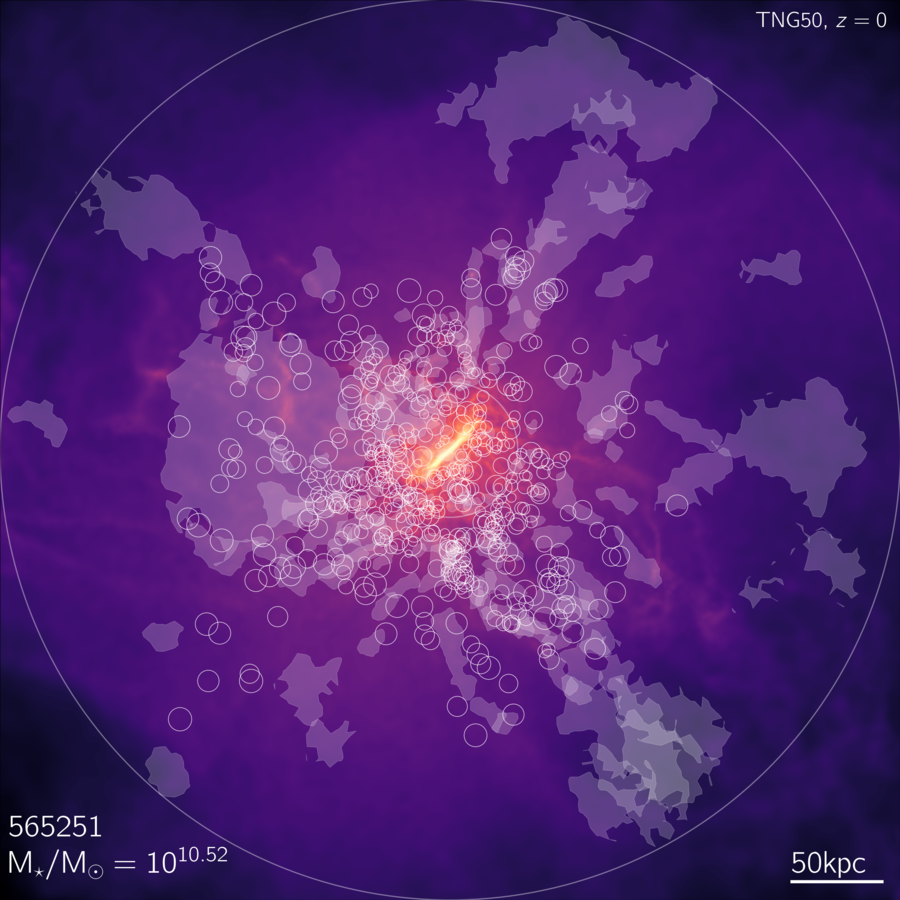
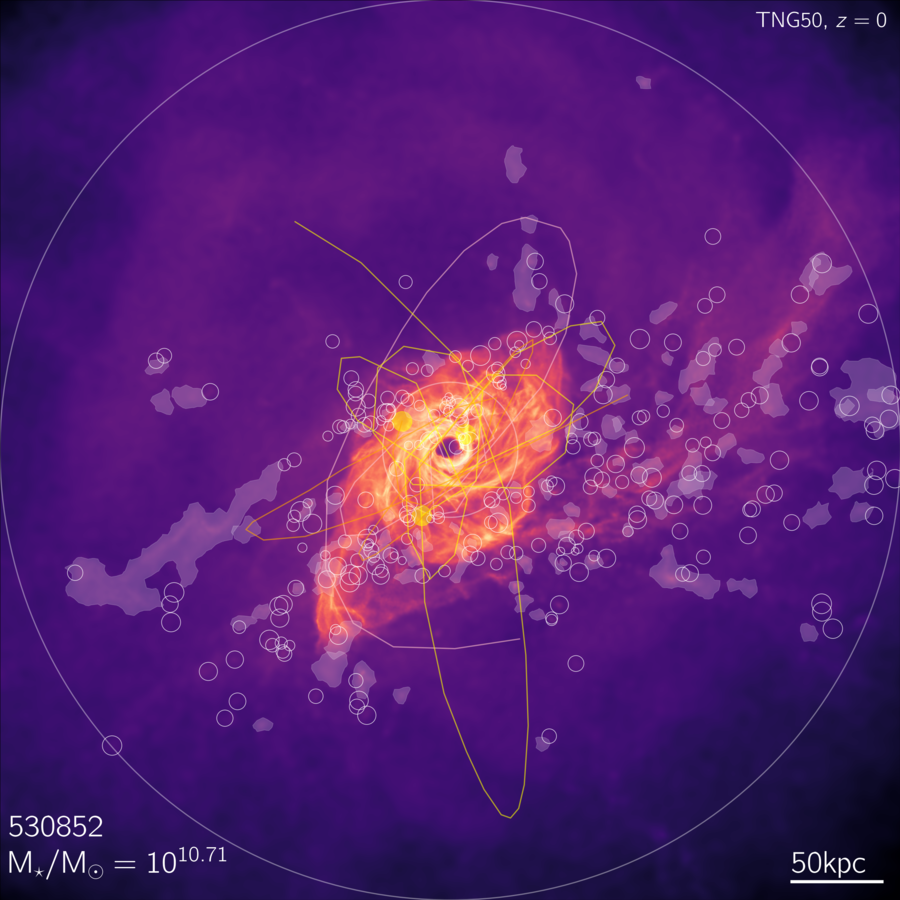
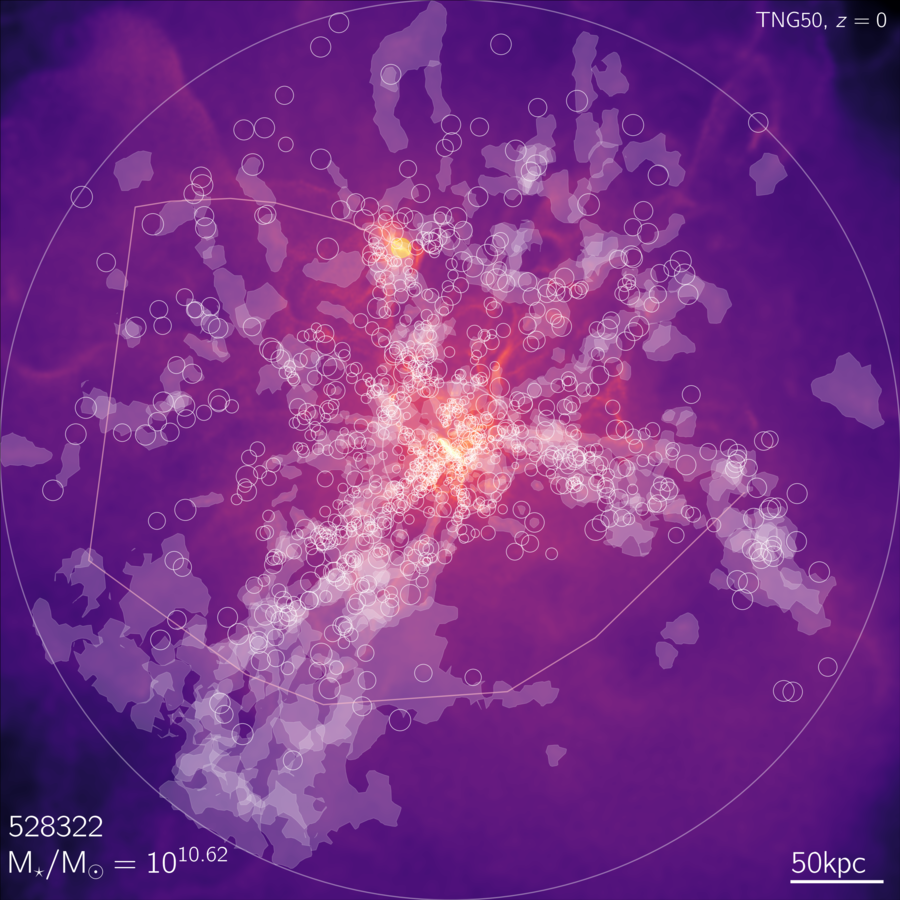
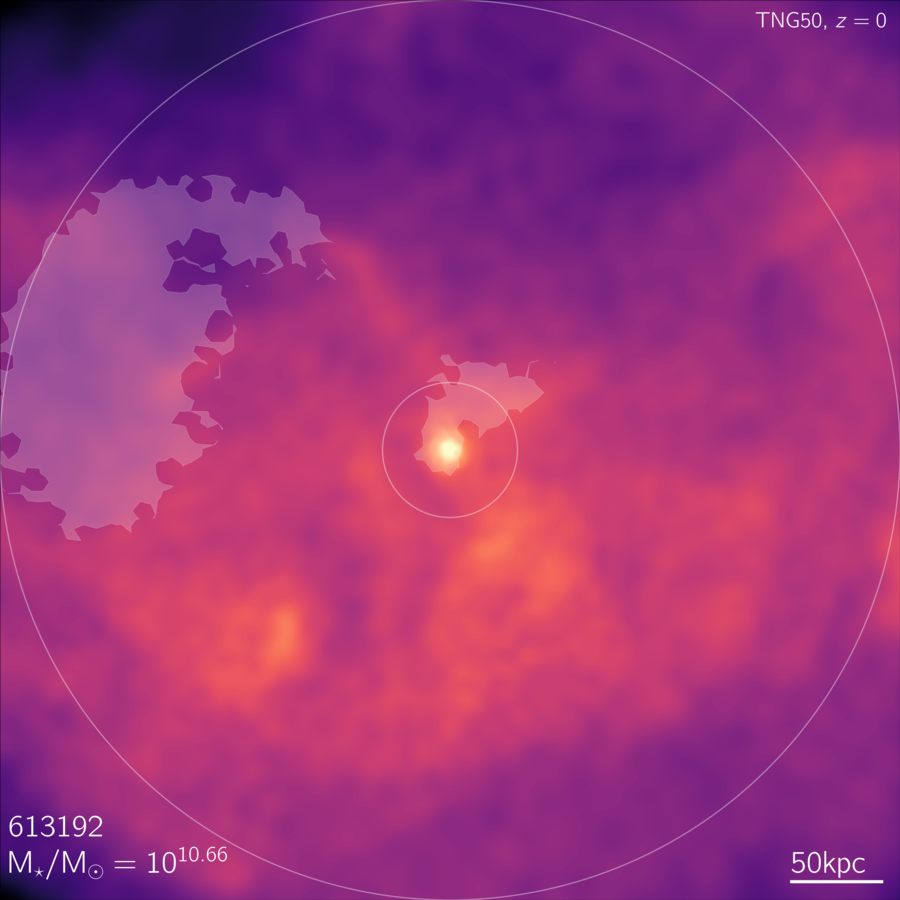
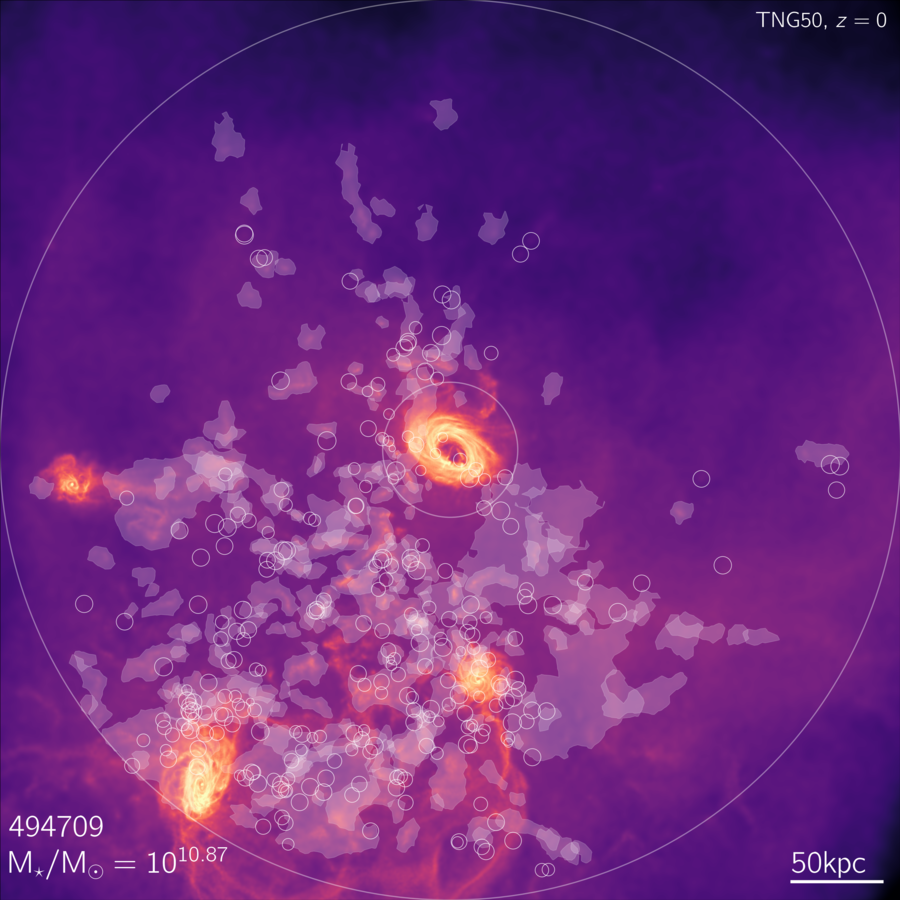
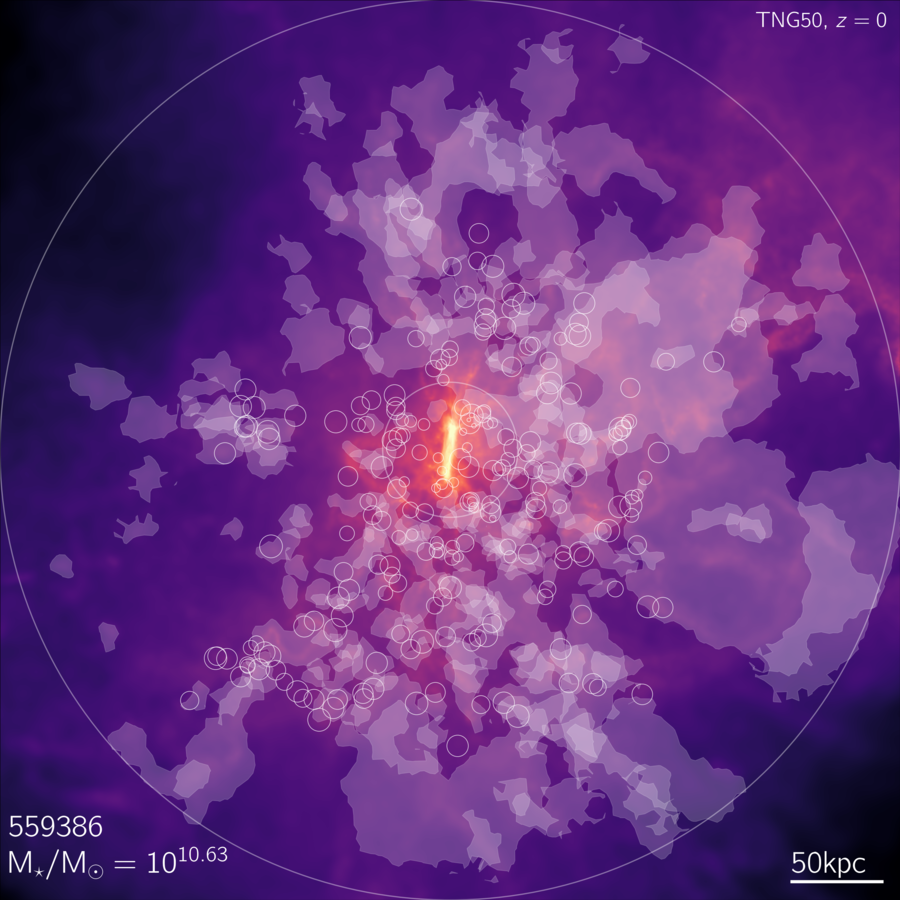
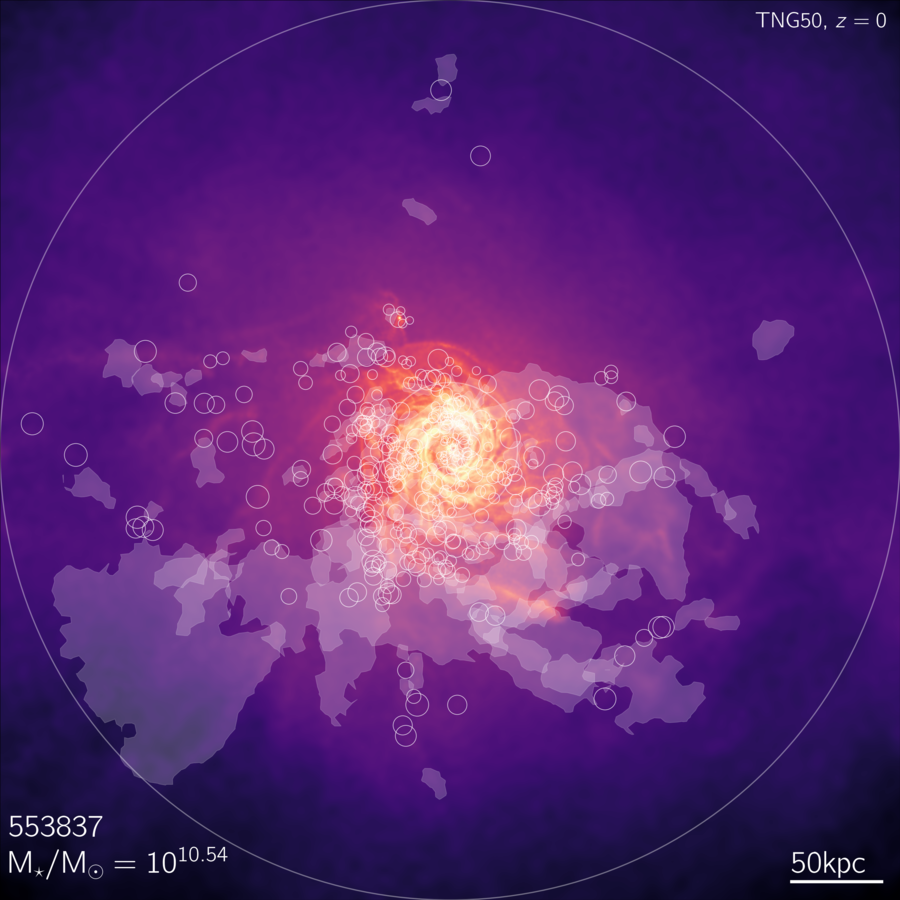
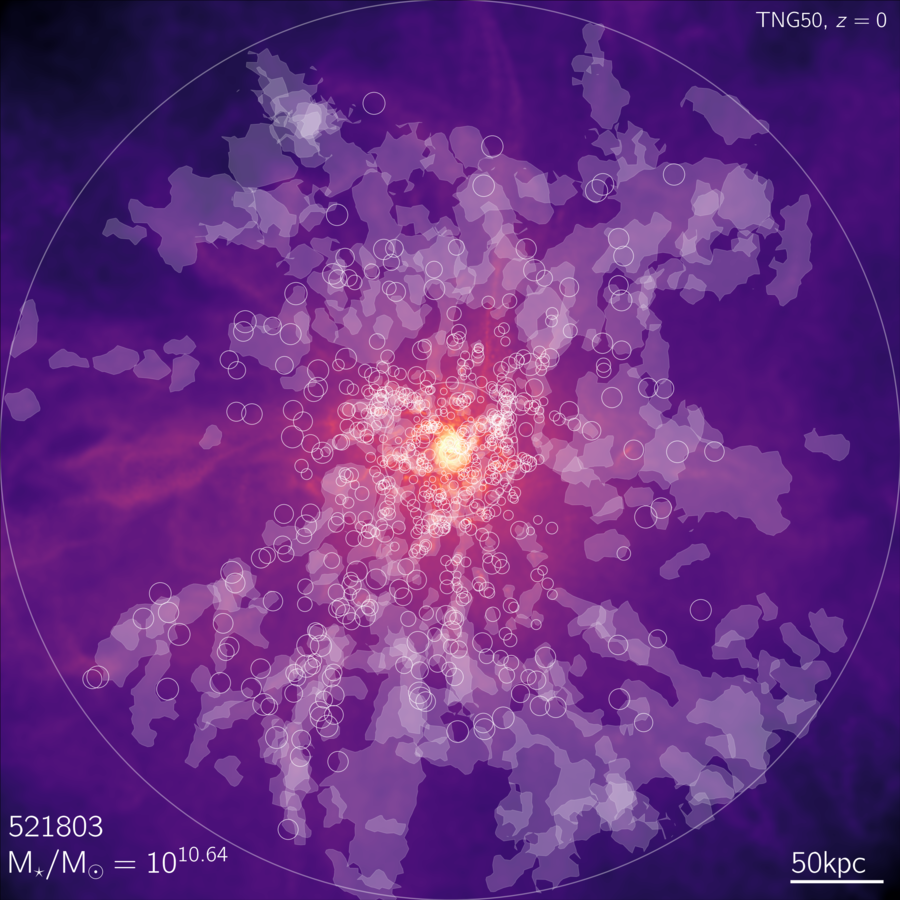
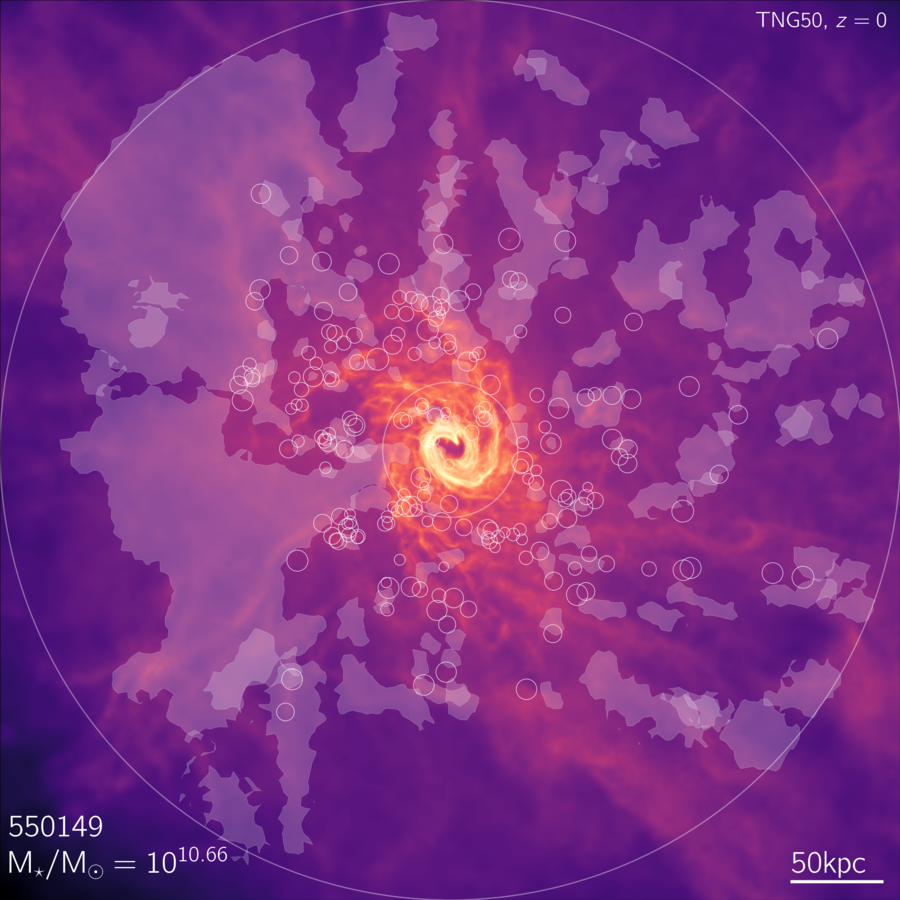
Nelson+ (2019) halo-scale gas flow morphologies from TNG50.
Pillepich+ (2019) galaxy kinematic maps from TNG50, stars.
Pillepich+ (2019) galaxy kinematic maps from TNG50, gas.
Rodriguez-Gomez+ (2019) stellar light images and morphological measurements for TNG50.
Rodriguez-Gomez+ (2019) stellar light images for TNG50.
Peroux+ (2020) metallicity vs radial velocity for CGM gas in TNG50.
Pillepich+ (2021) eROSITA-like X-ray bubbles in the CGM of Milky Way/M31-like galaxies in TNG50.
Ramesh+ (2023a) circumgalactic medium of Milky Way/M31-like galaxies in TNG50.
Ramesh+ (2023b) cold clouds in the CGM of TNG50 Milky Way/M31-like galaxies.
Pillepich+ (2024) sample of Milky Way/M31-like galaxies from TNG50. Stellar light images.
Pillepich+ (2024) sample of Milky Way/M31-like galaxies from TNG50. Physical properties.
Zinger+ (2023) Zooniverse Cosmological Jellyfish from TNG50 and TNG100.
Bottrell+ (2024) HSC-SSP stellar light mocks from TNG50.
Bottrell+ (2024) idealized stellar light mocks from TNG50.
These images follow Figure 2 of Ramesh+ (2023b), and visualize the gaseous halos surrounding Milky Way-like galaxies in TNG50, at redshift zero. These views of the circumgalactic medium (CGM) are shown on the scale of the virial radius of the parent dark matter halo (largest white circle). The white shapes show the actual location, and morphology, of large cold clouds identified in the CGM, while white circles show the locations and sizes of smaller cold clouds (with total masses less than 5x105 Msun). The background map shows the gas column density projection, and the yellow markers and lines show the positions of the three most massive satellites with baryon fraction at least 10%, if available, and their past orbits. Each galaxy in this sample of 132 is shown three times, from three different projection directions.
No more images.